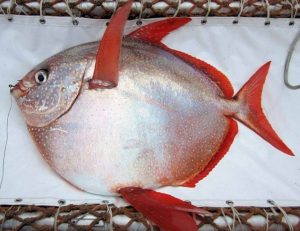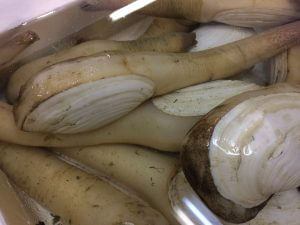It is true that in an age when aquatic resources are being depleted, there is a worldwide demand for a substitute for luxurious fish. However, since it is impossible to distinguish between them when they are cut into pieces, we cannot allow them to do whatever they want.
Global food fraud involving seafood can be classified into the following four patterns. Examples of each are provided below.
1. Fish species mislabeling:
According to an article on DNA testing conducted within the EU in May 2024, samples from approximately 300 restaurants, including those in Brussels, were tested. Despite being labeled as tuna, the survey reported widespread contamination and mislabeling of 15 species, with the species of 15% remaining unidentified.
2. Origin mislabeling:
According to a report published by SeaD Consulting in December 2024, it was revealed that 4 out of 5 shrimp labeled as “Gulf Shrimp” served at the National Shrimp Festival, a national event in Alabama, were actually imported (primarily farmed shrimp from China and Argentina).
3. Farm-raised vs. wild mislabeling:
DNA analysis was conducted on approximately 120 salmon products sold at supermarkets and sushi restaurants around Seattle (2022–2023). The results showed that 18% were mislabeled. Specifically, 32.3% of salmon sold at sushi restaurants were farm-raised but labeled as “wild-caught.”
4. Concealment of chemicals and preservation methods:
In December 2024, the RASFF (Rapid Alert System for Food and Feed) reported that carbon monoxide was detected in multiple tuna products originating from Belgium. In the United States, the FDA has approved CO treatment as a “GRAS” (Generally Recognized as Safe) substance.However, it is banned in many countries, including the EU, Japan, and Canada. In the U.S., “vitamin tuna” (tuna treated for color improvement) is reported to account for up to 60% of the market.
Below are some examples of practices that have been carried out in Japan for many years.
 First of all, Opah belly meat with some fat is used for the tuna in Negi-toro (tuna minced with Welsh onion leaves). Opah is widely distributed in warm seas and it’s known to be inexpensive with a smooth taste. The price is less than 1/100 of the Pacific bluefin tuna and if possible Negi-toro made from Opah should be avoided.
First of all, Opah belly meat with some fat is used for the tuna in Negi-toro (tuna minced with Welsh onion leaves). Opah is widely distributed in warm seas and it’s known to be inexpensive with a smooth taste. The price is less than 1/100 of the Pacific bluefin tuna and if possible Negi-toro made from Opah should be avoided.
Next let’s discuss Japanese conger, an essential Edo-style sushi topping. A substitute for Japanese conger is the Common snake eel, which is a type of sea snake from Peru. The taste is pretty good, but the skin is rubbery and it doesn’t stick to the Shari (vinegar rice) so it’s instantly apparent that it’s a substitute fish. If you find Japanese conger at kaiten-zushi for JPY 100 per plate, you might want to question the source.
 A premium sushi topping is the Mirugai clam (also called Hon-miru). This shellfish is characterized by its unique texture and taste. Instead the Japanese geoduck (Shiro-miru) is used, which sells for half the market price. However, the taste of the two is so similar that even Sushi Tsu has mistaken them, which is great news for dishonest dealers.
A premium sushi topping is the Mirugai clam (also called Hon-miru). This shellfish is characterized by its unique texture and taste. Instead the Japanese geoduck (Shiro-miru) is used, which sells for half the market price. However, the taste of the two is so similar that even Sushi Tsu has mistaken them, which is great news for dishonest dealers.
In April 2015 the Food Labeling Act was revised in Japan, leading to progressive reduction of fraudulent labels, but it is not a solution that eradicates dishonest dealers so consumers need to be educated and aware.
To effectively combat food fraud, regulatory bodies must enforce strict labeling laws and conduct scientific inspections, businesses must maintain transparent traceability and obtain trusted certifications, and consumers must remain vigilant by carefully checking product information, prices, and origins while choosing reliable vendors and asking questions whenever doubts arise.
Related contents:
“DNA test couldn’t identify the species”: Insights into seafood mislabeling and new EU traceability
https://www.mashed.com/30278/things-never-order-sushi-restaurant/
We hope this information will be helpful.

Revision date: July 4, 2025
Share this article